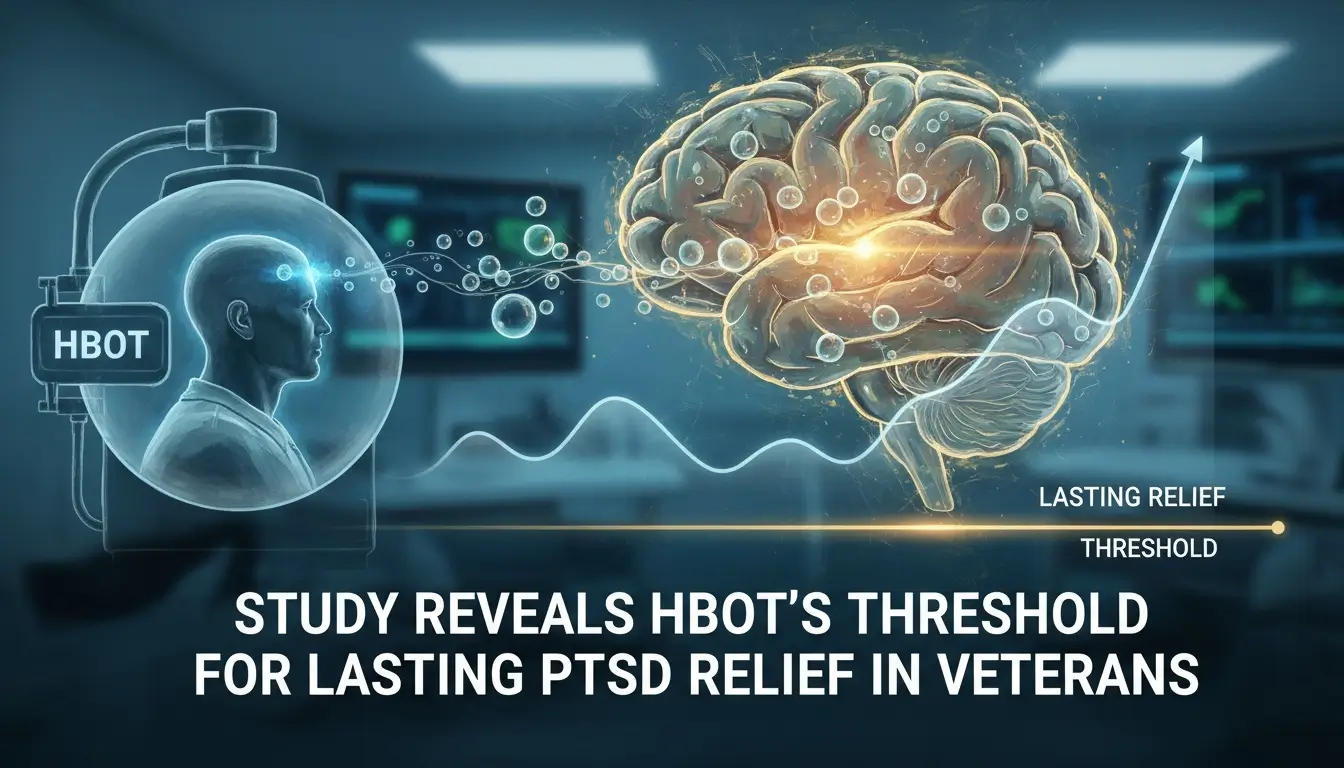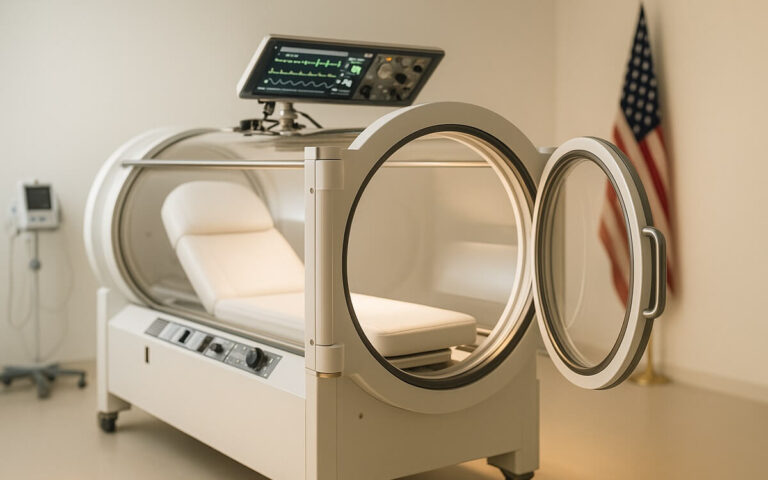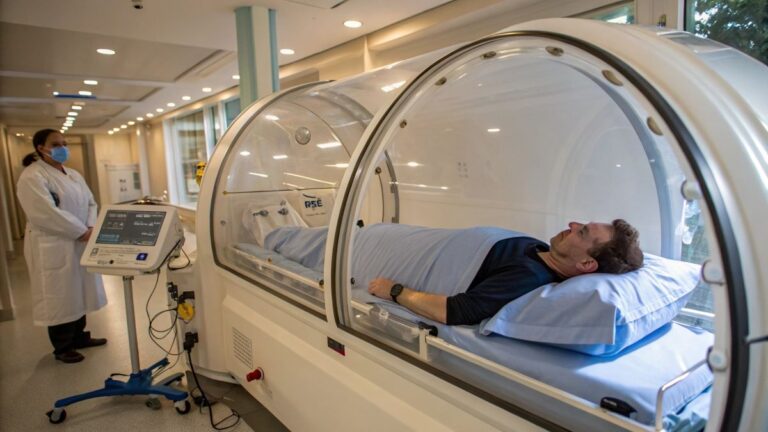- A new study demonstrates that hyperbaric oxygen therapy (HBOT) can promote neuroplasticity and reduce PTSD symptoms in veterans.
- The research analyzed data from 56 male veterans who did not respond to standard treatments.
- Participants achieving at least 35% symptom improvement during HBOT maintained gains after treatment ended.
- HBOT involves breathing 100% oxygen under increased pressure to repair brain tissue.
- The protocol, called the hyperoxic-hypoxic paradox, fluctuates oxygen levels to aid brain regeneration.
A study published on September 17, 2025, explores how hyperbaric oxygen therapy (HBOT) provides long-term relief from post-traumatic stress disorder (PTSD) symptoms in male veterans.
Conducted by the Sagol Center for Hyperbaric Medicine and Research at Shamir Medical Center and the Department of Molecular Biology at the Weizmann Institute of Science in Rehovot, Israel, the research highlights HBOT’s role in addressing treatment-resistant PTSD.
PTSD affects more than 13 million Americans and up to 30% of combatants, leading to intrusive thoughts, avoidance, mood changes, and hyperarousal that impair daily life. Traditional therapies fail for about 50% of patients due to lasting brain changes.
This study reexamined data from a prior trial with 56 veterans, using statistical analysis to link in-treatment progress to ongoing benefits. The full study is available here.
Understanding PTSD and Treatment Challenges
PTSD develops after exposure to events like combat, accidents, assaults, terror attacks, or natural disasters. Symptoms fall into four main groups: intrusive memories such as nightmares and flashbacks; avoidance of reminders; negative shifts in thoughts and mood; and heightened alertness or hyperarousal. These issues disrupt social and work functions, reducing quality of life.
Standard treatments often fall short, with half of patients showing no response. Recent research points to structural and activity changes in the brain as reasons for this resistance. As a result, treatments that target biology, like those inducing neuroplasticity—the brain’s ability to reorganize and repair itself—have drawn focus.
The study, titled Hyperbaric Oxygen Therapy for PTSD: Threshold Effect for Sustained Symptom Improvement in a Biologically Based Treatment, builds on this by showing HBOT’s potential to fix damaged brain tissue.
Key Findings from the HBOT Trial
The trial involved 56 male veterans with PTSD who had not benefited from other therapies. Researchers applied statistical methods to assess how symptom changes during HBOT predicted long-term outcomes.
Veterans who reached a 35% or greater reduction in symptoms by the end of treatment saw continued improvement post-therapy. In contrast, those below this level lost their gains.
This threshold effect mirrors patterns in wound healing, where HBOT promotes tissue repair until a healing point is reached, after which recovery proceeds independently. In the brain, crossing the 35% mark triggers regenerative processes that persist without further sessions.
Dr. Shai Efrati, chair of Aviv Scientific’s Medical Advisory Board and director of the Sagol Center, explained the implications in a statement from the press release:
“HBOT offers veterans a promising treatment option for PTSD by addressing underlying biological factors that contribute to their symptoms. The results of this study are similar to what we see in peripheral non-healing wounds: HBOT is continued until ~80% granulation tissue is achieved, after which the healing process continues on its own.”
He added:
“We now observe the same principle in the brain – once the threshold is crossed, regenerative processes carry forward even after HBOT ends. This enables veterans to experience lasting symptom relief, allowing them to regain their quality of life.”
Sources for these findings include the study’s authors at Shamir Medical Center and the Weizmann Institute, as detailed in the GlobeNewswire press release dated September 17, 2025.
How HBOT Works and Its Protocol
Hyperbaric oxygen therapy (HBOT) delivers 100% oxygen in a pressurized chamber, increasing oxygen levels in the blood and tissues. This process, known as the hyperoxic-hypoxic paradox, alternates high and low oxygen exposure during sessions.
The fluctuations stimulate repair in damaged brain areas, supporting recovery from conditions like stroke, traumatic brain injury, PTSD, long COVID, and cognitive decline linked to aging.
The protocol used in this study aligns with treatments at Aviv Clinics in The Villages, Florida. No specific hardware versions or compatibility details were mentioned, but HBOT chambers meet medical standards for safe oxygen delivery under pressure up to 2-3 atmospheres absolute (ATA), as per general industry practices.
The therapy requires patients to sit or lie in the chamber for sessions lasting 60-90 minutes, typically over 40-60 treatments.
About Aviv Clinics and Broader Applications
Aviv Clinics leads efforts in treating cognitive and functional decline through advanced HBOT protocols. Partnered with the Sagol Center at Shamir Medical Center—the world’s largest hyperbaric facility—the clinics offer the Aviv Medical Program.
This program combines HBOT with cognitive exercises, physical activity, and nutrition, based on nearly two decades of research and thousands of treated patients.
The program follows evidence from studies like this one, overseen by Dr. Efrati. It targets chronic neurological issues without needing special software or hardware beyond standard medical equipment. For more on Aviv Clinics, refer to their official resources in the original announcement.
This research, reported via GlobeNewswire on September 17, 2025, from Orlando, Florida, underscores HBOT’s value for veterans facing PTSD’s daily burdens.






